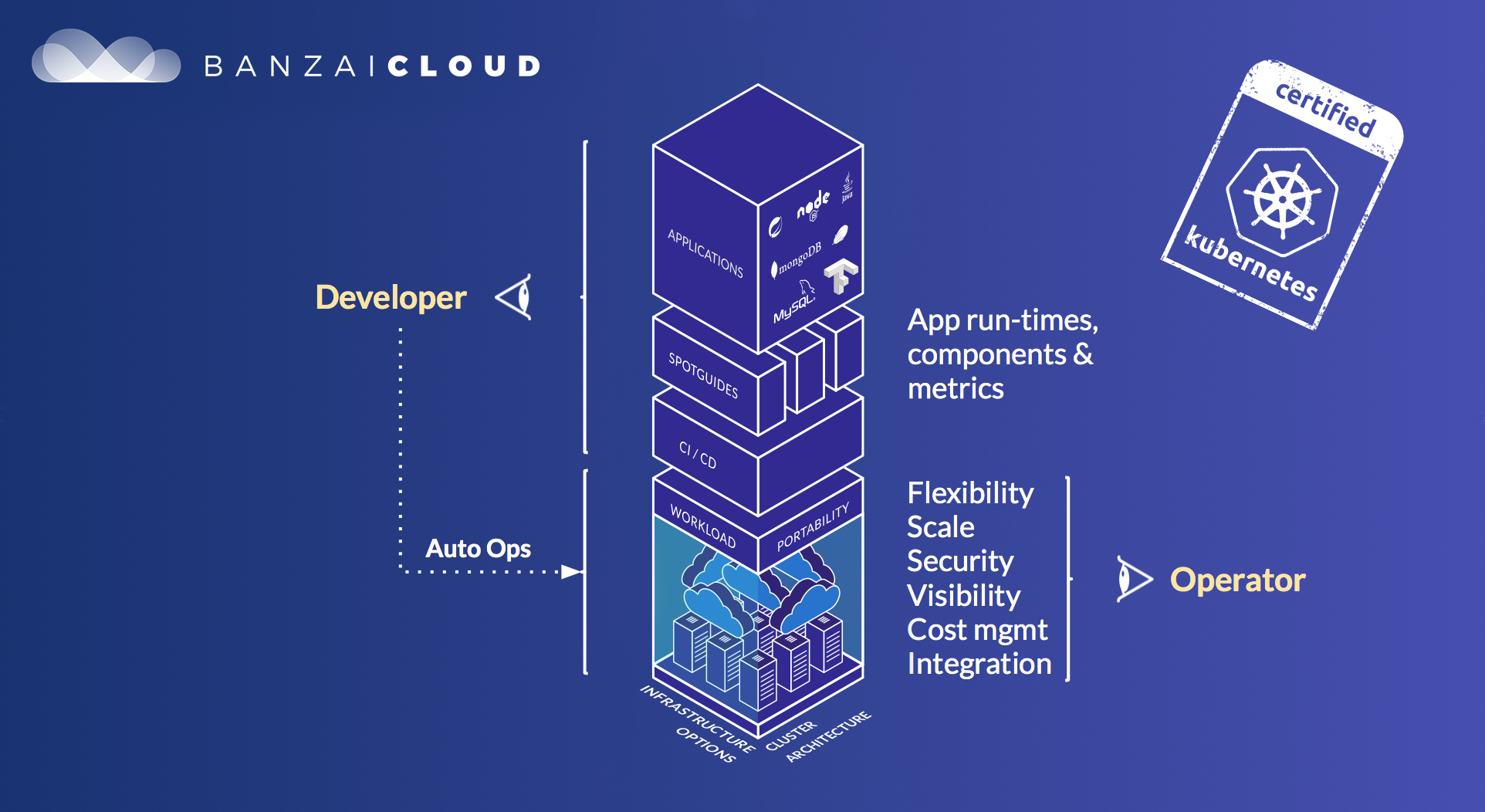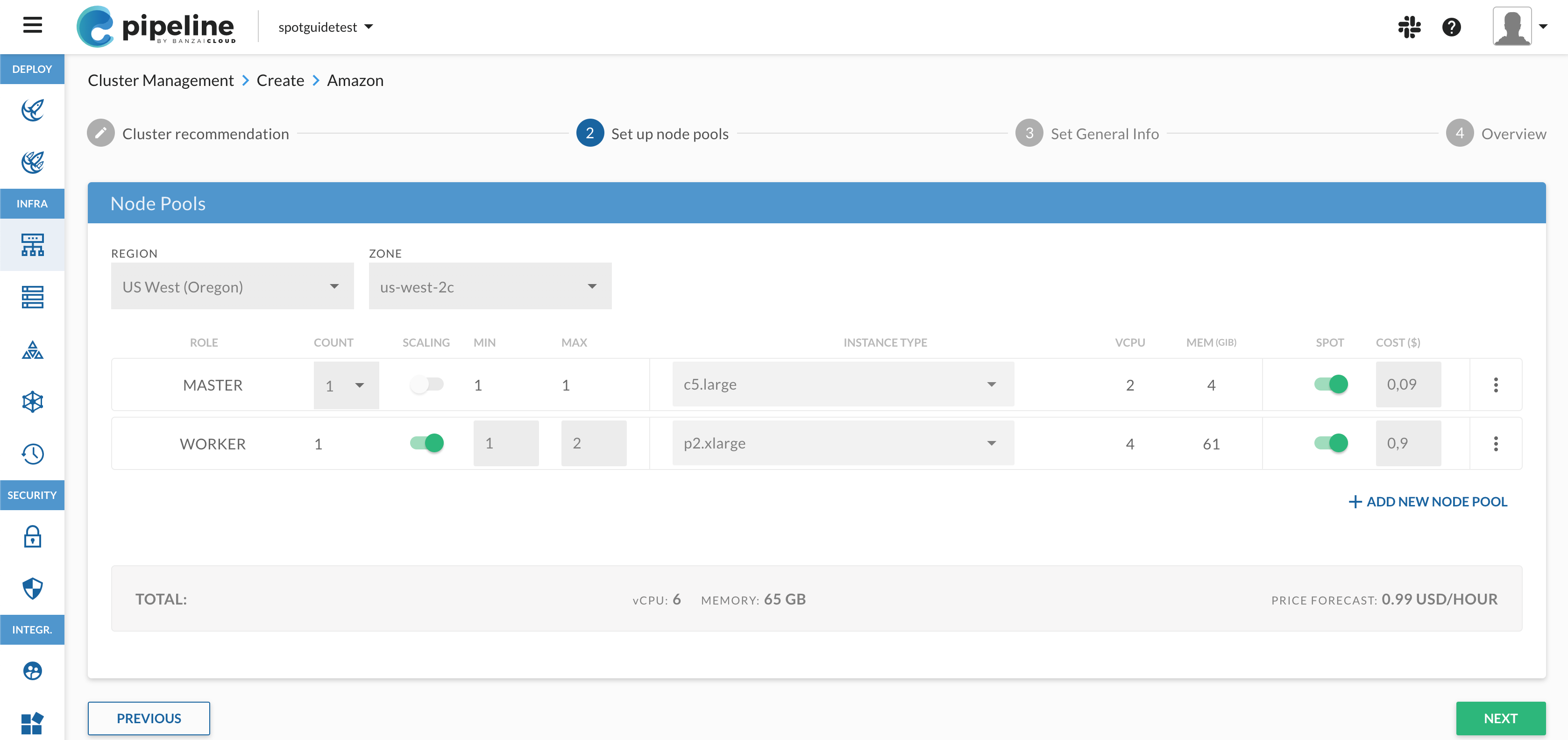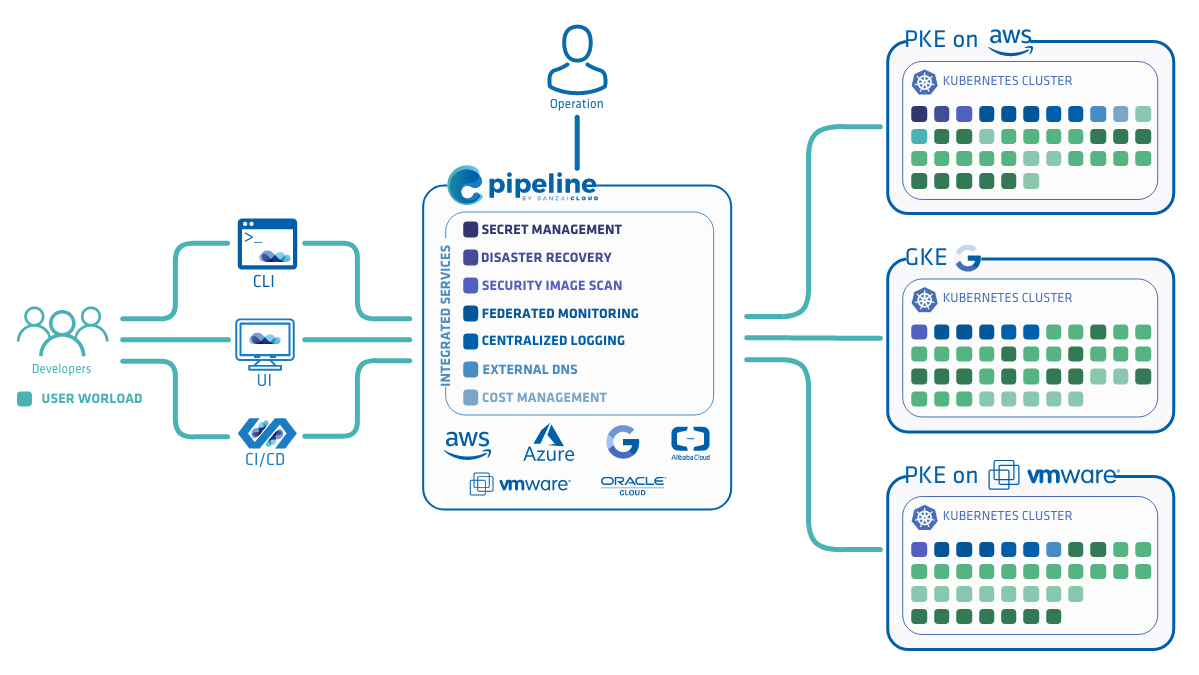Banzai Cloud is proud to announce that our open source Pipeline Kubernetes Engine is now a CNCF Certified Kubernetes Distribution! PKE is an extremely simple Kubernetes installer and distribution, designed to work anywhere, and is the preferred run-time of Banzai Cloud’s cloud native application and devops container management platform, Pipeline. Banzai Cloud Pipeline supercharges the development, deployment and scaling of container-based applications with native support for multi-, hybrid-, and edge-cloud environments.
Users of the Pipeline Kubernetes Engine can now experience the peace of mind of running on a CNCF-certified Kubernetes platform, and are set to enjoy the consistency and ease with which they can migrate workloads between CNCF conformant Kubernetes distributions. PKE is currently available through Pipeline or as a standalone Kubernetes installation - and brings the intuative simplicity we’re known for to installation, monitoring, autoscaling, disaster recovery, enterprise-grade security, rolling upgrades, logs, and more.
CNCF certification was an obvious next step for PKE, since Banzai Cloud has always been committed to building trust through various CNCF programs: we are CNCF Silver members, Certified Kubernetes Service Providers and our engineers are Certified Kubernetes Application Developers and Certified Kubernetes Administrators.
We have the same vision for PKE we have for the Pipeline platform: Enterprise Kubernetes adoption is way too complex, and in order to become simpler, it must first become more opinionated.

With PKE and the Pipeline container management platform, we envisioned two user-types: at one end of the spectrum there are users who are purely application focused, with limited ops skills and who would rather not deal with ops at all, while at the other end are users who already have an ops team but would like to increase the level of standardization between their teams in order to make their work more efficient. To our minds, both require the same rich foundation but focus on features at different layers in the stack. We combine a large number of building blocks in an opinionated way to provide a foundation that we believe works best for our use-cases. There are, of course, mechanisms that change default settings and customize behavior but, ultimately, a platform becomes useful only if it correctly makes fundamental decisions on behalf of its users, shutting down certain superfluous or redundant ways of accomplishing the same tasks.
Listing all of our platform’s features would make for an even longer blog post, so I’ll just give you the highlights.
- Use your favorite cloud provider: you can spin up Kubernetes clusters on Amazon, Azure, Google, Digital Ocean and hybrid and on-prem clusters
- Multi-dimensional autoscaling (cluster and applications) based on custom metrics
- Option to save costs with spot and preemptible instances while maintaining SLAs
- Secure storage of secrets (cloud credentials, keys, certificates, passwords, etc.) in Vault
- Direct injection of secrets into pods (bypassing K8s secrets)
- Unified storage API
- Security scans throughout the whole of a deployment’s lifecycle
- Disaster recovery with periodic backups and the ability to do full cluster state restores
- Centralized log collection and federated monitoring to give insight into your applications
- Easy to use dashboards
- Integration with enterprise services like Docker registries, Git, AAA or SIEM providers (Active Directory, LDAP, OpenID, Gitlab, GitHub Enterprise, etc.)
- Custom and configurable K8s schedulers
Kubernetes everywhere 🔗︎
We took a cloud-first, datacenter-second approach. Our reasoning was simple: we could move extremely quickly on the cloud, receive widespread adoption and align with cloud-oriented trends as they appeared in the enterprise. Simultaneously, we began work on PKE to be able to bring these technologies to on-prem datacenters. Our objective was not to compete with pure-play K8s distributions, but to make a unified solution available that works across multiple clouds and on-prem deployments. This means that, for us, on-prem PKE Kubernetes is just one part (however important) of the problem we need to solve in order to integrate our control plane, security mechanisms, unified logging/monitoring infrastructure, etc. Our goal is to catapult enterprises toward hybrid cloud deployments, allowing them to scale up from their datacenters to the cloud of their choice, while, at the same time, providing them with a unified view of their systems. On Banzai Cloud Pipeline, cloud-based clusters are just a natural extension of on-premise datacenters, not a segmented part of yet another infrastructure silo.
Useful links 🔗︎
- The recently released Pipeline Kubernetes Engine, PKE
- CNCF certification test results for 1.12
- CNCF certification test results for 1.13
- The Banzai Cloud Pipeline platform source code
- Pipeline Enterprise Preview as a managed and free service for developers
- Check out our documentation
- If you like what you see, give us a GitHub star for PKE and Pipeline!
















